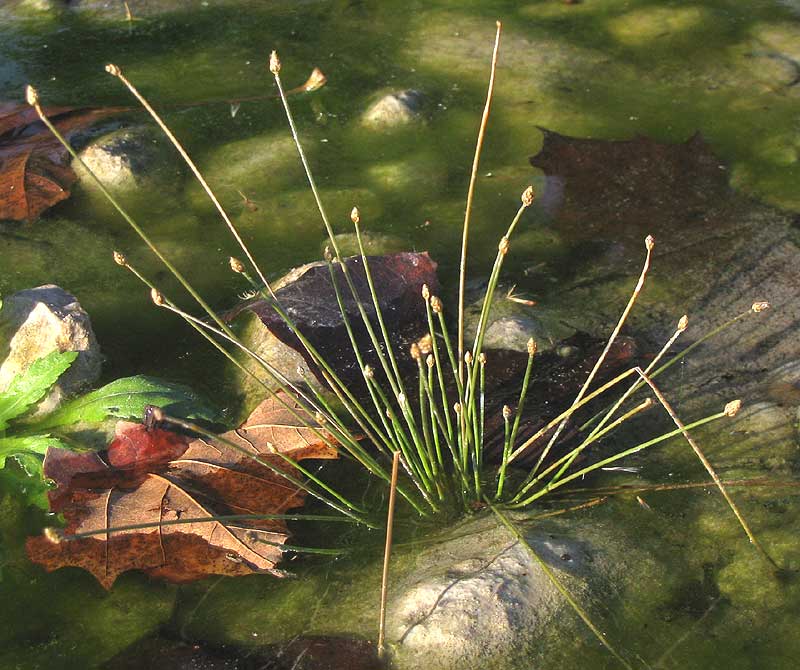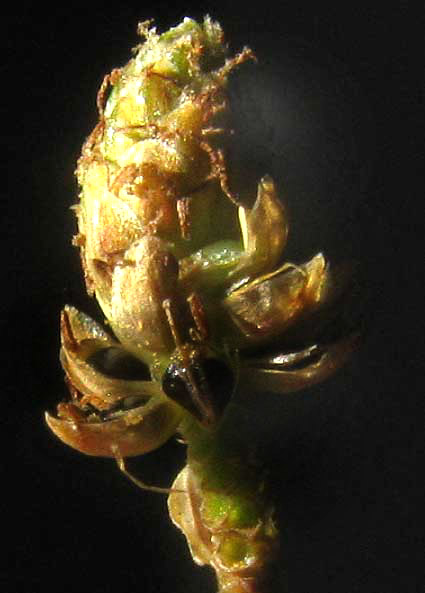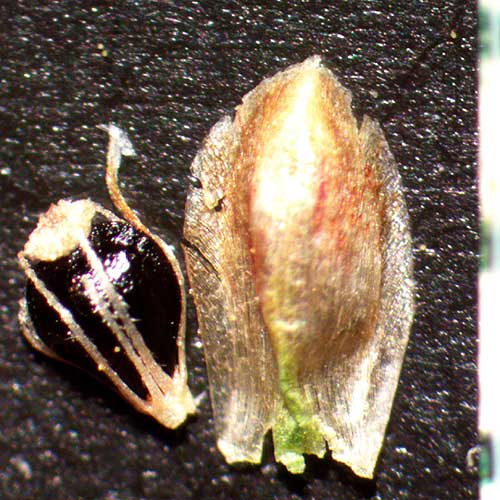Excerpts from Jim Conrad's
Naturalist Newsletter

from the December 23, 2012 Newsletter issued from the valley of the Dry Frio River in northern Uvalde County, southwestern Texas, on the southern border of the Edwards Plateau; elevation ~1750m (~5750 ft); N29.62°, W99.86°; USA
SPIKERUSH
In standing, shallow water in a stagnate pool beside the little Dry Frio River below the cabin you can see the spiky little plant shown above.
Comparing the size of the plant to the Sycamore leaf floating beside it you can see that the plant is only about seven inches tall (18cm). The little conelike things atop the stems are spikelets composed of scales. Each scale at arises below a flower's sexual parts or mature achene-type fruit -- achenes being dry, one-seeded fruits that don't split open at maturity. A spikelet is shown close up below:

In that picture some of the lower scales have been pulled away to reveal the black achenes inside them. A close-up of an achene next to its millimeter scale is shown below:

Note that the black achene, which is about 0.8mm long, is topped with a pale, caplike item. That's called a tubercle and it's the much-expanded base of the style, a style being the neck between a flower's ovary and its pollen-gathering stigma. Tubercles come in many shapes and sizes and are much used when identifying to species level. Also note the bristles arising at the achene's base. Bristles also are typical, and their presence, number, length and color are similarly used for identification to species level.
You've surely seen many of this kind of plant, especially in wetlands. They're commonly referred to as spikerushes and spikesedges and about 120-250 spikerush species are recognized, depending on your expert. The species occur nearly worldwide, mostly in aquatic and wet-soil situations. Most species are larger than the one in our photograph. Spikerushes are members of the Sedge Family, the Cyperaceae. The Water Chestnut is a spikerush. Fifteen spikerush species -- all members of the genus Eleocharis -- are included in Shinners & Mahler's Flora of North Central Texas, and I figure we may have about that many here.
Our spikerush keys out to ELEOCHARIS GENICULATA, which doesn't really have a good common name, since it's not commonly noticed and talked about. The species, an annual, is widespread in wet areas in the Americas, Asia, Africa, and some Pacific Islands.
Among its main field marks distinguishing it from similar spikerush species are; its small size; its black mature achenes; the achenes being lens-shaped in cross section, not three-cornered, and; the low, broad tubercle atop the achene being very distinct from the achene itself.